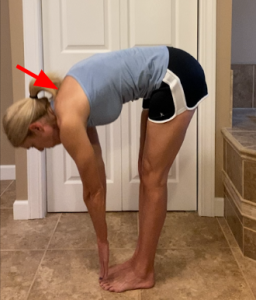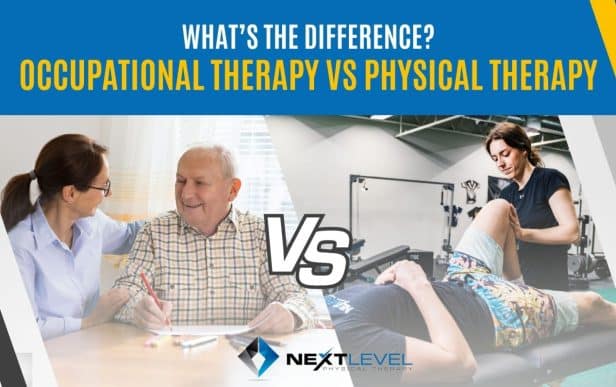Dr. Artem Imnadze, DPT
Are you Treating the Problem or The Result?
Shoulder problems are incredibly common among the athletes and active adults we see. As therapists, we regularly encounter diagnoses such as shoulder impingement, tendonitis, and rotator cuff injuries. These conditions are often blamed on weak rotator cuff muscles, scapular winging, or muscle imbalances.
One major thing to understand about these diagnoses is that they are not the actual problem. They are the result. They are the result of deeper rooted movement habits and mechanics that often go unaddressed in traditional rehabilitation.
Common solutions for these issues are often just as short sighted. Stretching, rotator cuff strengthening, and general strength training are frequently prescribed, yet they often miss the mark when it comes to truly resolving pain. Why? Because they address symptoms rather than the cause of the faulty mechanics, overuse of certain muscles, or positioning muscles in disadvantaged positions.
To understand the biggest missing piece in resolving shoulder pain, we first need to understand how the shoulder actually works.
A Quick Anatomy Lesson of the Shoulder Complex
The shoulder complex is made up of four major components: the glenohumeral joint, which is the ball and socket, the scapula or shoulder blade, the sternum and clavicle, and the rib cage. Shoulder movement in any direction requires rotation of the humeral head within the glenoid socket.
Because the shoulder has so much freedom of movement, stability of the joint must be maintained. This is why every shoulder movement is accompanied by scapular movement. Since the socket of the shoulder joint is part of the scapula, its motion is essential for keeping the humeral head centered within the socket during movement.
When the humeral head does not stay centered, issues such as shoulder impingement, proximal biceps tendonitis, and rotator cuff injuries can occur.
For the shoulder to move well, the scapula must move in coordination with the humerus. The scapula has a natural curvature and sits on a rib cage that also has curvature due to normal thoracic spine shape. The rounded rib cage and curved scapula allow these structures to stay congruent and permit normal scapular rotation in support of shoulder movement.
The position of the rib cage and its ability to expand properly to support the scapula is essential for normal shoulder motion without compensation.
Rib Cage Position and Expansion
Under normal circumstances, the rib cage should be able to expand in all directions during breathing. With each inhale, the lower ribs should move outward in what is known as bucket handle motion, while the upper ribs and sternum move up and outward in a pump handle motion. The back side of the rib cage should demonstrate similar movement, particularly in the upper ribs.
When the rib cage lacks these normal movements, scapular position and shoulder mobility are negatively affected.
For example, when the back side of the upper rib cage becomes restricted or flattened due to chronic tension in the upper back, scapular movement becomes limited. A curved scapula resting on a flat surface cannot move or rotate the same way it would on a rounded, congruent rib cage.
Without proper scapular movement, the shoulder either loses access to normal motion or must rely on compensatory mechanics. Repeatedly moving into ranges you do not truly have or compensating for restrictions is exactly what leads to repeated stress in the same tissues. This often shows up as shoulder impingement, biceps tendonitis, or gradual wear of the rotator cuff tendons.
How Rib Cage Mechanics Are Lost
Loss of normal rib cage mechanics is commonly seen in resistance training. Many gym movements emphasize pulling the shoulder blades back and down for stability. Whether pushing, pulling, squatting, or deadlifting, rib cage and scapular position often remain the same.
A similar issue comes from the common advice to pull the shoulders back and down for good posture. Spending excessive time in a retracted scapular position limits normal scapular motion and flattens the upper rib cage. This forces the shoulder to compensate to achieve desired movements.
The Solution
To truly resolve shoulder pain, you must start at the source. While factors such as rotator cuff strength, dynamic stability, and local tissue irritation matter, they should not be addressed in isolation.
If you do not resolve what led to these issues in the first place, you are simply treating symptoms. To improve shoulder joint mechanics and motion, proper scapular movement must be restored. Normal scapular movement depends on a rib cage that is positioned correctly and able to expand in all directions to provide a stable foundation.
Once this foundation is in place, other components of shoulder rehabilitation can be addressed with much greater success.
Below are 2 examples of drills to implement into your program to improve ribcage expansion:
Seated Zercher Breathing Video
Seated Back Expansion Video




